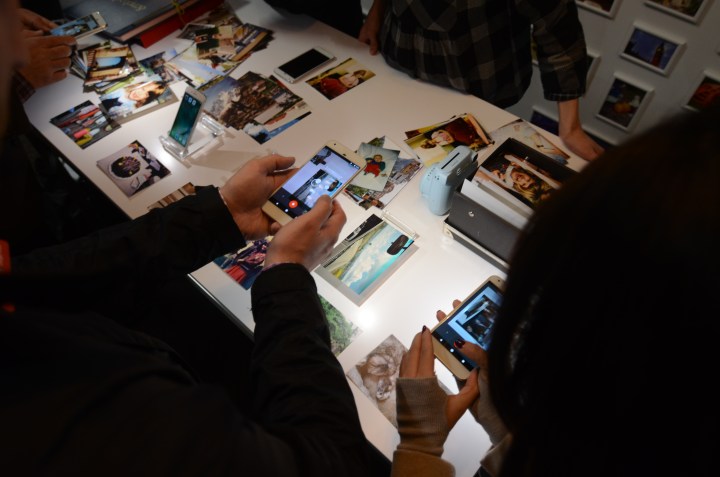
PhotoScan is an app that lets you take a picture of a physical, old photo. While the user interface is simple enough for anyone to use, there’s a great deal going on in the background. The app uses machine learning to remove glares, crop out the desk or wall behind the printed photo, and make sure the colors are accurate so that you get a perfect scan.
You simply take four photos of the physical photograph and four white dots will appear above the printed photo. Line up your phone’s camera with the four dots and each will turn blue, as the app takes the photos automatically. Almost instantly, your photo will be processed and stored in the cloud on the Google Photos app, if you have it downloaded.

It doesn’t matter if the photograph you want to digitize is hanging in a frame on the wall or sitting in an album, Google’s machine learning magic will do everything to ensure the end result is just the scanned photo, and nothing else. We got to try out the app at Google’s event in New York City and it is simple, fast, and seamless. The digitized photos were impressively accurate in representing their real life counterparts.
New editing features
But PhotoScan isn’t only new announcement from Google today. The Google Photos app is getting quite a few improvements, including advanced editing features. Until now, the Photos app only had a handful of editing options like “Pop” and the option to adjust the “Light.” It was better to use another app to edit your photos, like Google’s own Snapseed or Instagram. Not anymore.
In the new update, you’ll find more advanced options that allow you to adjust the exposure, highlights, whites, blacks, shadows, and more. Google also has two special options: Deep Blue and Skin Tone. The former lets you make blue skies and water pop for better contrast in photos, and the latter to adjust the skin tone on people in photographs. It’s useful when you crank up the saturation, but don’t want to make someone look orange.
If the advanced editing tools aren’t for you, Google has improved the auto-enhance tool with machine intelligence for better one-tap solutions. There are also 12 new filters in the app, but they’re not your average Lark or Valencia. These filters are “smart” and use machine intelligence to correct “exposure and color balance for that specific look.” It doesn’t just slap a filter on a photo and call it a day. Google says it “studied different genres of photography” to ensure these smart filters offered the best look.
More video slideshows

There’s a new one that will go live today — Lullaby. If you have a lot of photos of your newborn baby sleeping, the app makes a video with all this content and sets it to a lullaby. In December, expect to see Holiday Traditions to showcase all your past Christmas photos; and in April, we’ll see a special movie for cats and dogs in honor of National Pet Day. For Earth Day in April, there will also be a movie curated with all your outdoor photos and videos.
The app lets you edit these movies to add other photos and clips you may prefer, as well as change the song.
PhotoScan is available on iOS and Android today, and the updates to the Google Photos app on both operating systems are rolling out now.
Editors' Recommendations
- Here’s how Apple could change your iPhone forever
- 5 phones you should buy instead of the Google Pixel 8
- This Google Pixel 8a leak just spoiled everything about the phone
- 5 phones you should buy instead of the Google Pixel 8 Pro
- Google Messages vs. Samsung Messages: Which app should you use?

